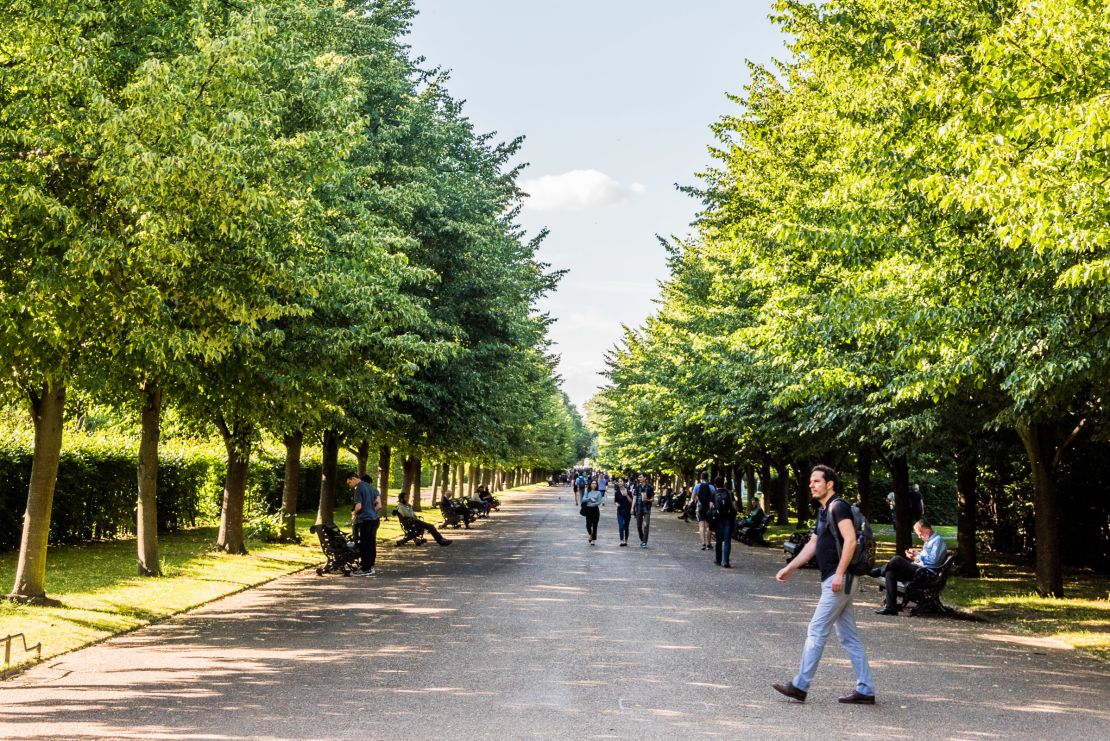With its traffic-clogged streets and polluted air it may seem like an unlikely choice, but the bustling metropolis of London is set to become the world’s first National Park City.
But the UK capital won’t be swapping its skyscrapers for forests. Instead, the National Park City status aims to change how people think about green spaces in urban areas.
It’s the brainchild of former geography teacher Daniel Raven-Ellison. He hopes that re-imagining London as an urban national park will encourage people to conserve the natural environment and help make it greener.
“London is not just a city, it’s a landscape,” he said. “It’s a landscape that’s home not just to nearly nine million people, but there are as many trees. We share this city with 15,000 other species of wildlife and I don’t think that urban life is worth any less than that life that we see in maybe those more distant places from cities.”
Related content: Creating bubbles of clean air in London
Raven-Ellison’s idea started off five years ago with a single blog post, and after several years of advocacy grew into a successful crowdfunding campaign that raised more than £32,000, and eventually a partnership with the Mayor of London, Sadiq Khan.
Last August, Khan announced plans to help make the capital a National Park City, and Raven-Ellison confirmed that it will gain this title by July 2019.
One of the main aims of the National Park City vision is to make more than half of London’s total area green by incorporating more green roofs and walls covered in grass and plants, as well as “rain gardens” to prevent flooding, and habitats for wildlife.
Around 47% of Greater London is already physically green – including areas such as domestic gardens, golf courses and natural habitats – and 18% of the capital is public parks.
As a National Park City, Khan says London will be greener in the long-term while protecting its core network of parks and green spaces.
Related content: Can plastic roads curb waste epidemic?
Will it work?
London has a serious problem with pollution – one that is costing £3.7 billion and more than 9,000 lives each year. The city’s air has repeatedly exceeded the legal requirements set by the EU for nitrogen dioxide - mostly caused by road traffic.
While Khan has introduced measures to clean London’s air, and green the capital, the National Park City status is not necessarily just about changing policy, said Raven-Ellison.
It is about encouraging Londoners to celebrate nature in the city.
“When I started off, a lot of people just thought that I was a bit bonkers,” he said. “But whether it took five seconds, five minutes, or five months, people have really awakened to this big idea that could really improve life in London.”
Robert Cowley, lecturer in sustainable cities at King’s College London, said that the initiative wouldn’t radically transform London, but was more to do with branding it as a green city.
Related content: The Philippines is building a green, disaster-resilient city

“I think if you look at their particular targets they’re not so different to what we’ve got already in terms of the amount of green space and access to greenery,” Cowley told CNN.
“It will probably improve some places incrementally, but on the other hand, you never know what new initiatives are going to spark a wider effect. It’s worth trying.”
The National Park City Foundation, a nonprofit organization set up to support the National Park City idea in London, has expressed interest in extending this movement to other cities like Adelaide, Glasgow, and San Francisco.
Raven-Ellison said any city could potentially be a National Park City, as long as it has a strong civic society and regional government that is actively doing everything it can to make the city greener, healthier, and wilder.
Photographs by Esan Swan
















